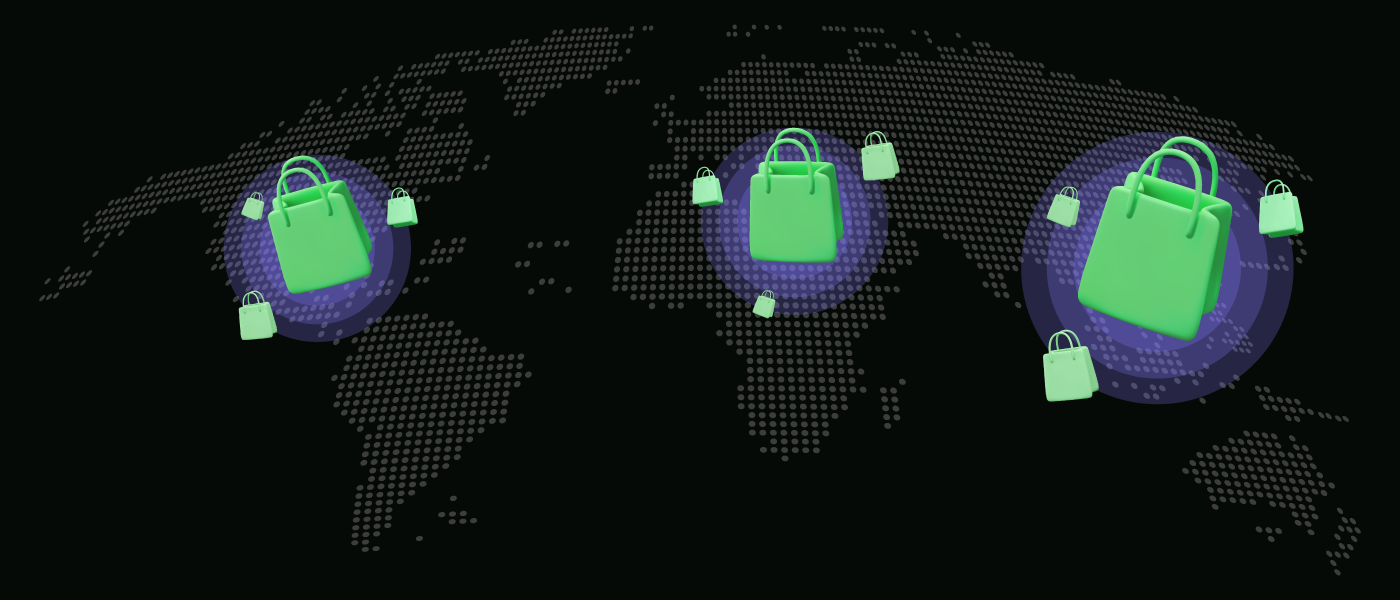The world of e-commerce is a thriving global marketplace, and for businesses seeking to make their mark, localizing strategies are paramount. In the archipelagic beauty of the Philippines, this becomes an art and science of its own. Understanding the nuances of consumer behavior, embracing cultural sensibilities, and adopting emerging technologies can pave the way for success.
This article explores how crafting a Philippine-centric e-commerce store can unlock opportunities, navigate challenges, and resonate with the vibrant Filipino audience.
Understanding the Philippine Market

The success of any e-commerce venture in the Philippines hinges on a profound comprehension of the local market landscape. Google’s Year in Search report describes how the growing Filippino consumers are globally connected and locally focused. The report further states that interest in the localized search term filipiniana grew by over 130%.
By delving into the demographics, consumer behavior, and cultural factors that shape the preferences of Filipino shoppers, e-commerce businesses can tailor their strategies effectively.
A. Demographics and Consumer Behavior
To establish a robust e-commerce presence in the Philippines, businesses must acquaint themselves with this country’s demographics and consumer behavior. The Philippines has over 113 million inhabitants and is a fertile ground for e-commerce. Statistics reveal that a significant portion of the population is 18 to 44, comprising tech-savvy individuals who actively engage in online shopping.
B. Cultural Factors and Preferences
Understanding the cultural nuances and preferences of Filipino consumers is paramount. Filipinos value family, celebrations, and community spirit, often reflected in their shopping habits. They have a penchant for personal connections and appreciate businesses that exude warmth and hospitality. Consequently, crafting an e-commerce store that resonates with Filipino culture fosters trust and affinity among local shoppers.
The Importance of Localization

Localization, in the context of e-commerce, is not just an option; it’s a strategic necessity when operating in the dynamic and diverse landscape of the Philippines. Understanding why localization matters and recognizing its significant impact on e-commerce success is pivotal.
Why Localization Matters
In the Philippines, where cultural diversity and nuances abound, localization is the linchpin of e-commerce success. It’s not merely about language translation; it encompasses adapting every facet of your online store to align with Filipino culture, values, and preferences. Here’s why localization is indispensable and its profound impact:
1. Deeper Connections with Consumers: By speaking to Filipinos in a language and style they understand and resonate with, e-commerce businesses can forge deeper emotional connections with consumers. This fosters a sense of belonging and trust.
2. Improved User Experience: A well-localized website provides a smoother, more intuitive user experience. From user interface elements to product descriptions and payment options, every aspect must betailored to Filipino preferences, making navigation and shopping enjoyable.
3. Higher Conversion Rates: Localization significantly increases the likelihood of conversion. Shoppers are likelier to purchase when they feel a brand understands their needs and values.
4. Better SEO Performance: Localized content can boost your search engine rankings in the Philippines. It ensures that your website appears in relevant local search results, attracting more organic traffic to your online store.
5. Adaptation to Payment Preferences: Localization extends to payment methods. A recent study shows how 71 percent of online shoppers prefer COD as their primary payment method. Including popular local payment gateways and types builds convenience and inclusivity, leading to more completed transactions.
6. Cultural Relevance: The impact of cultural relevance cannot be overstated. From product offerings to marketing campaigns, aligning with local customs and traditions showcases respect for Filipino culture, which can be a significant competitive advantage.
7. Competitive Edge: In the Philippines’ highly competitive e-commerce market, businesses that invest in localization gain a distinct competitive edge. They are perceived as more committed and customer-oriented.
8. Market Expansion: An e-commerce store that excels in localization has the potential to expand its market reach across various regions within the Philippines, tapping into diverse consumer bases effectively.
Benefits of a Philippine-Centric Approach
Adopting a Philippine-centric approach to e-commerce brings forth a multitude of benefits:
1. Enhanced Customer Engagement: Localized content and messaging resonate better with Filipino shoppers, increasing customer engagement and loyalty.
2. Improved User Experience: An e-commerce website that speaks the language of its users, offers solutions that address the pain points of its Filippine customers and provides a seamless and comfortable browsing and shopping experience.
3. Increased Conversions: Tailoring product offerings and marketing strategies to local tastes and preferences can significantly boost conversion rates.
4. Trust and Credibility: A localized website demonstrates commitment to the local market and resonates to a growing demographic that responds to localized content that’s exclusively catered for them, fostering consumer trust and credibility.
5. Competitive Advantage: Outshining competitors who neglect localization is a key competitive advantage, particularly in the Philippines’ fiercely competitive e-commerce landscape.
Translating Content Effectively
Successful localization in the Philippine e-commerce landscape goes beyond merely translating words. It involves thoughtfully adapting your content to resonate with the local audience while respecting cultural sensitivities.
A. Language Localization
Language is the cornerstone of localization. Filipino consumers are more likely to engage with and trust a platform that communicates in their native tongue. Here’s how effective language localization can be achieved:
- Multilingual Website: Ensure your e-commerce website is available in multiple languages, with Filipino (Tagalog) and English being the primary options. This provides accessibility to a broader audience. Investing in website localization services helps you seamlessly adapt your content, ensuring it resonates with your target markets while maintaining cultural and linguistic accuracy.
- Accurate Translation: Invest in professional translation services to ensure proper translation of product descriptions, policies, and communication materials. Local dialects like Cebuano or Ilocano might be relevant for specific regions.
B. Adapting Content for Cultural Sensitivity
Localization isn’t limited to language; it’s also about adapting content to respect cultural norms and preferences. Here’s where you can implement localization effectively:
1. Branding: Your brand identity should reflect an understanding of Filipino culture. This can be seen in your brand logo, imagery, and chosen colors, as different dyes can carry distinct meanings in Filipino culture.
2. Product Offerings: Tailor your product range to suit local preferences. For instance, during double day sales or festive seasons like Christmas or local fiestas, offer products and promotions that align with Filipino traditions and celebrations.
3. Marketing Campaigns: Craft marketing campaigns that resonate with Filipino values, holidays, and traditions. For example, highlighting the importance of family or community (Bayanihan) in your advertising can strike a chord with Filipino consumers.
4. Customer Support: Provide customer support in local languages and with a cultural understanding. A significant advantage is having local customer service representatives who can effectively address queries and concerns.
5. Payment Methods: Consider integrating local payment options like GCash, PayMaya, and local bank transfers to accommodate the preferred payment methods of Filipino customers. Offer different payment methods like Cash on Delivery and BNPL to cater to a diverse demographic with different spending habits.
. Content Personalization: Leverage user data to personalize content for Filipino customers. This can include product recommendations based on local trends and preferences. Ensure that your product imagery resonates with the local shoppers.
By effectively translating content and adapting it for cultural sensitivity in various aspects of your e-commerce business, you demonstrate a commitment to understanding and connecting with your Filipino audience, ultimately fostering trust and loyalty.
Local Payment Methods and Gateways
In the realm of e-commerce, catering to the preferred payment options of your target market is paramount for a seamless shopping experience. In the Philippines, the payment landscape has its unique dynamics, and understanding and integrating these local methods can make or break your e-commerce venture.
A. Preferred Payment Options in the Philippines
Filipino consumers have diverse payment preferences shaped by their access to technology and banking services. Here are some of the most widely favored payment options in the Philippines:
1. Cash on Delivery (COD): COD remains a popular choice, especially for customers who may not have access to digital payment methods or prefer to inspect the product before paying.
2. Bank Transfers: Many Filipinos opt for bank transfers, which involve paying directly from their bank accounts to the seller’s account. This method is commonly used for larger purchases.
3. E-wallets: Digital wallets like GCash and PayMaya have gained significant traction in the Philippines. They allow users to store funds and make online payments or transfers conveniently.
4. Credit and Debit Cards: While credit and debit card usage is increasing, it’s essential to remember that not all Filipinos have access to these cards. Nevertheless, they are still a valuable payment option for many.
By embracing the full spectrum of payment options, from digital wallets and credit cards to bank transfers and COD, you not only meet the diverse needs of Filipino consumers but also foster trust and encourage repeat business. Providing a hassle-free payment experience is critical to crafting a Philippine-centric e-commerce store.
Optimizing for Mobile-First Experience
In a nation where smartphones are ubiquitous and mobile internet usage is rising, crafting a Philippine-centric e-commerce store necessitates embracing the mobile-first approach.
A. The Mobile-First Trend in the Philippines
The Philippines is witnessing a remarkable surge in mobile internet adoption. With a growing number of Filipinos accessing the internet primarily through smartphones, mobile commerce (m-commerce) has become a dominant force in the e-commerce landscape. This shift in consumer behavior emphasizes the importance of optimizing your online store for mobile users.
Consider these insights:
- Smartphone Penetration: According to a survey by the Philippine Statistics Authority, the penetration is estimated to reach 73.27 percent and peak in 2028
- Mobile Internet Usage: Filipinos often use their smartphones for various online activities, from social media engagement to online shopping. A study by Hootsuite and We Are Social reported that mobile phones accounted for over 50% of web traffic in the Philippines.
- Social Commerce via Mobile: The popularity of social commerce platforms like Facebook, Instagram, and TikTok, which are predominantly accessed via mobile apps, underlines the importance of a mobile-first strategy for e-commerce.
B. Mobile-Friendly Website Design
To provide a seamless shopping experience for mobile users in the Philippines, focus on the following aspects of mobile-friendly website design:
1. Responsive Design: Ensure your e-commerce website employs a responsive design that automatically adapts to various screen sizes and orientations. This guarantees that your site functions optimally on smartphones and tablets.
2. Fast Loading Speed: Mobile users prioritize websites that load quickly, especially in regions with varying network speeds. Compress images, minimize scripts, and optimize your website’s performance to reduce loading times.
3. User-Friendly Navigation: Simplify the navigation of your mobile site. Utilize clear and intuitive menus, buttons, and filters. Prioritize easy access to essential shopping features, such as product search and the shopping cart.
4. Mobile Payment Integration: Facilitate swift and secure mobile payments. Ensure your payment gateways are mobile-compatible, offering a seamless checkout experience on small screens.
5. Thumb-Friendly Interactions: Design interactive elements, such as buttons and links, to be easily clickable with a thumb or finger. Consider the ergonomics of mobile usage for comfortable and efficient navigation.
6. Optimized Product Images: Display high-quality product images optimized for mobile screens. Implement image zoom functionality for customers to inspect products more closely.
7. Streamlined Checkout: Simplify the checkout process on mobile devices. Reduce the steps required for a successful purchase and allow guest checkout options to expedite transactions.
By prioritizing a mobile-first approach in your e-commerce strategy, you align your business with the prevailing consumer behavior in the Philippines. An efficient and user-friendly mobile shopping experience attracts and retains customers and positions your brand as accessible and customer.
Navigating Regulatory and Legal Considerations

When establishing a Philippine-centric e-commerce store, adhering to local regulatory and legal frameworks is imperative. This ensures that your business operates ethically and within the boundaries of the law, fostering trust among Filipino consumers.
A. Compliance with Philippine E-commerce Laws
Understanding and complying with Philippine e-commerce laws is fundamental for a successful online venture. Here are key legal considerations:
1. Consumer Act of the Philippines: Familiarize yourself with the Consumer Act, which outlines consumer rights and responsibilities. It covers product warranties, unfair trade practices, and consumer protection.
2. Electronic Commerce Act: This legislation governs electronic transactions and e-commerce activities in the Philippines. It establishes the legal validity of electronic contracts and signatures, among other provisions.
3. DTI Regulations: The Department of Trade and Industry (DTI) in the Philippines often issues regulations specific to e-commerce. These can include rules on product labeling, pricing transparency, and online sales promotions.
4. Taxation: Comply with the country’s taxation laws, which may include value-added tax (VAT) on certain goods and services. Ensure proper invoicing and taxation for your e-commerce transactions.
B. Data Privacy and Security
Protecting customer data and ensuring data privacy and security are paramount. Be aware of the following aspects:
1. Data Privacy Act: The Data Privacy Act of 2012 sets the guidelines for protecting personal information in the Philippines. Ensure that your e-commerce platform and data management practices align with its provisions.
2. SSL Encryption: Implement Secure Sockets Layer (SSL) encryption to safeguard sensitive customer information during online transactions. SSL encryption helps protect data transmitted between your website and customers.
3. Payment Card Industry Data Security Standard (PCI DSS): If you handle credit card payments, adhere to PCI DSS requirements to prevent data breaches and maintain cardholder data security.
4. Privacy Policies: Draft clear and comprehensive privacy policies that inform customers about how their data is collected, used, and protected. Make these policies easily accessible on your website.
5. User Consent: Obtain informed consent from customers before collecting their data. Clearly state the purposes for which data will be used and allow users to opt-out.
Logistics and Delivery Tailored for the Philippines
Efficient logistics and delivery are the lifeblood of any successful e-commerce venture. In the context of the Philippines, a country of over 7,000 islands with unique geographical challenges, addressing shipping complexities and providing reliable last-mile delivery solutions is essential. Shipping is a decisive factor in e-commerce conversions. Nearly 32% of the customers would abandon their carts because “the estimated shipping time was too long,” and 22% because “there was no guaranteed delivery date.
A. Addressing Shipping Challenges
Shipping within the Philippines can be challenging due to its archipelagic nature. To tackle this, consider the following strategies:
1. Island-Specific Shipping: Partner with local courier services specializing in island-to-island deliveries. These providers have in-depth knowledge of regional logistics, which is invaluable for reaching customers in remote areas.
2. Realistic Shipping Timeframes: Set clear and realistic shipping timeframes. Remember that deliveries to far-flung areas may take longer, so ensure your customers are informed about expected delivery times.
3. Strategic Warehousing: Strategically placed warehouses in different regions of the Philippines. This reduces shipping distances, speeds up deliveries, and minimizes costs.
B. Last-Mile Delivery Solutions
The last leg of delivery, often called the “last mile,” is where customers interact directly with your service. Tailoring this experience is vital:
1. Local Delivery Partners: Collaborate with local delivery partners who understand the intricacies of navigating Philippine neighborhoods. They can ensure smoother, more efficient last-mile deliveries.
2. Flexible Payment Options: Offer flexible payment options that cater to local preferences. Cash on delivery (COD) is a popular choice among Filipino consumers, providing security.
3. Order Tracking: Implement an order tracking system that allows customers to monitor the progress of their deliveries. This transparency builds trust and reduces inquiries about delivery status.
4. Customer Support: Maintain responsive customer support to promptly address delivery-related inquiries or concerns. A dedicated customer support team can handle inquiries effectively and provide real-time updates.
By tailoring your logistics and delivery operations to the unique challenges of the Philippines, you enhance customer satisfaction. Addressing shipping complexities and providing reliable last-mile solutions builds trust and sets you apart in a market where efficient delivery can be a game-changer for e-commerce success.
Marketing and Promotion for the Philippine Audience
Reaching and engaging the Filipino audience effectively requires a keen understanding of their preferences and habits. Here’s how you can tailor your marketing efforts:
A. Localizing Marketing Campaigns
Localization goes beyond language translation; it’s about adapting your marketing campaigns to resonate with Filipino culture and context. Consider the following:
1. Cultural Significance: Incorporate elements of Filipino culture into your campaigns. For instance, during significant festivals like Christmas or the “Ber” months, craft promotions that align with local traditions of gift-giving and celebrations.
2. Localized Content: Develop content that speaks to the Filipino experience. Share stories or testimonials from Filipino customers or highlight products that cater to local tastes and needs.
3. Localized Language: While English is widely spoken, incorporating Filipino (Tagalog) into your marketing materials can make your brand more relatable. Use Filipino phrases or idioms that resonate with the audience.
Take inspiration from successful localization efforts. For instance, Jollibee, a Filipino fast-food giant, effectively uses local storytelling in its ads, evoking strong emotional connections with its audience.
B. Social Media Strategies for the Philippine Market
The Philippines has a robust social media culture, making it a prime space for marketing. Here’s how you can leverage social media effectively:
1. Platform Selection: Focus on platforms popular among Filipinos. Facebook, Instagram, and YouTube are widely used. TikTok is also gaining traction, especially among younger demographics.
2. Demographics: Understand the demographics of each platform. Facebook has a broad user base, Instagram attracts younger users interested in visuals, and TikTok skews even younger. Tailor your content accordingly.
3. Active Hours: Filipinos are highly active on social media during specific times. Posting during lunch breaks, after work hours, and in the evenings often garner more engagement.
4. User-Generated Content: Encourage user-generated content (UGC) by running contests or campaigns that involve customers. Sharing user stories and experiences can boost brand authenticity.
5. Influencer Collaborations: Partner with local influencers with a genuine following. They can help amplify your message and connect with your target audience more effectively.
Key Performance Indicators (KPIs) for Localization
Localization is a strategic investment, and tracking its impact is essential. Here are KPIs to assess the success of your Philippine-centric e-commerce store:
1. Conversion Rate (CR): Measure how effectively your localized content and strategies turn visitors into customers. An increased CR indicates that your messaging resonates with the Philippine audience.
2. Bounce Rate: Monitor the percentage of visitors who navigate away from your site after viewing only one page. A lower bounce rate suggests that your content is engaging and relevant.
3. Average Order Value (AOV): Track the average amount Filipino customers spend per transaction. Effective localization often leads to higher AOV as customers feel more connected to your brand.
4. Customer Retention Rate: Assess how well your localized content and services retain Filipino customers. A high retention rate indicates that your brand meets their ongoing needs.
5. Click-Through Rate (CTR): Measure how often users interact with links or calls to action on your website or marketing materials. A higher CTR indicates that your localized content is compelling and engaging.
6. Customer Feedback and Reviews: Regularly gather feedback from Filipino customers. Positive reviews and constructive feedback can provide valuable insights into the effectiveness of your localization efforts.
7. Localization Cost vs. Revenue Increase: Calculate the cost of localization and compare it to the revenue generated from the Philippine market. Ideally, your revenue increase should outweigh the localization costs.
8. Time on Site: Assess how much time Filipino visitors spend on your site. Longer visit durations can indicate that they are engaged with your content.
9. Customer Support Tickets: Analyze the volume and nature of customer support requests from the Philippines. Effective localization should reduce inquiries related to misunderstandings or confusion.
10. Market Share Growth: Evaluate your e-commerce store’s market share within the Philippine market. Increasing market share is a strong indicator of successful localization.
By monitoring these KPIs and adapting your strategies based on the insights gained, you can continuously refine your localization efforts for your Philippine-centric e-commerce store. Localization isn’t a one-time task; it’s an ongoing process that evolves as your understanding of the market deepens.
Emerging Technologies and Opportunities
1. Augmented Reality (AR) and Virtual Reality (VR): Consider implementing AR and VR features to create an immersive shopping experience. Allow Filipino customers to visualize products, like trying on clothing virtually or placing furniture in their homes before purchase.
2. Chatbots and AI-Powered Customer Support: Harness the power of AI chatbots to provide instant customer support in both English and Filipino languages. These bots can assist with inquiries, track orders, and personalize product recommendations.
3. Voice Search Optimization: As voice search gains traction among Philippine consumers, optimize your store’s content for voice search. Tailor product listings and content to match the natural language queries of your audience.
4. Sustainability Initiatives: Filipino consumers are increasingly environmentally conscious. Embrace sustainability by offering eco-friendly products and packaging options, showcasing your commitment to responsible business practices.
5. E-commerce Mobile Apps: Develop a mobile app optimized for the Philippine audience. Mobile apps can offer a seamless shopping experience and improve customer retention.
6. Social Commerce Integration: Explore deeper integration with social media platforms, allowing Filipinos to shop directly from their favorite social networks, further capitalizing on their online presence.
Conclusion
As the Philippines’ e-commerce landscape continues to evolve, one truth remains constant: localization is the bridge that connects your e-commerce store to the hearts of Filipino consumers. By understanding their unique preferences, providing tailored experiences, and embracing emerging technologies, your e-commerce venture can flourish.
This journey may be intricate, but it is exciting and filled with the promise of growth, success, and lasting connections. The Philippine market awaits those who dare to embark on this transformative path of crafting a truly Philippine-centric e-commerce store.
Experience fulfillment by Locad today!
Frequently Asked Questions
What is the trend in e-commerce in the Philippines?
The trend in e-commerce in the Philippines is a growing preference for online shopping driven by convenience and digital adoption.
What is the largest e-commerce platform in the Philippines?
The largest e-commerce platform in the Philippines is Shopee, followed by Lazada.
What are the factors affecting e-commerce in the Philippines?
Factors affecting e-commerce in the Philippines include internet penetration, mobile device usage, and consumer trust.
What are the challenges of online shopping in the Philippines?
Challenges of online shopping in the Philippines include logistics and delivery issues, payment security concerns, and limited digital literacy in some areas.
What are the benefits of e-commerce in the Philippines?
The benefits of e-commerce in the Philippines include increased accessibility to products, convenience in shopping, and the potential for business growth and expansion.











